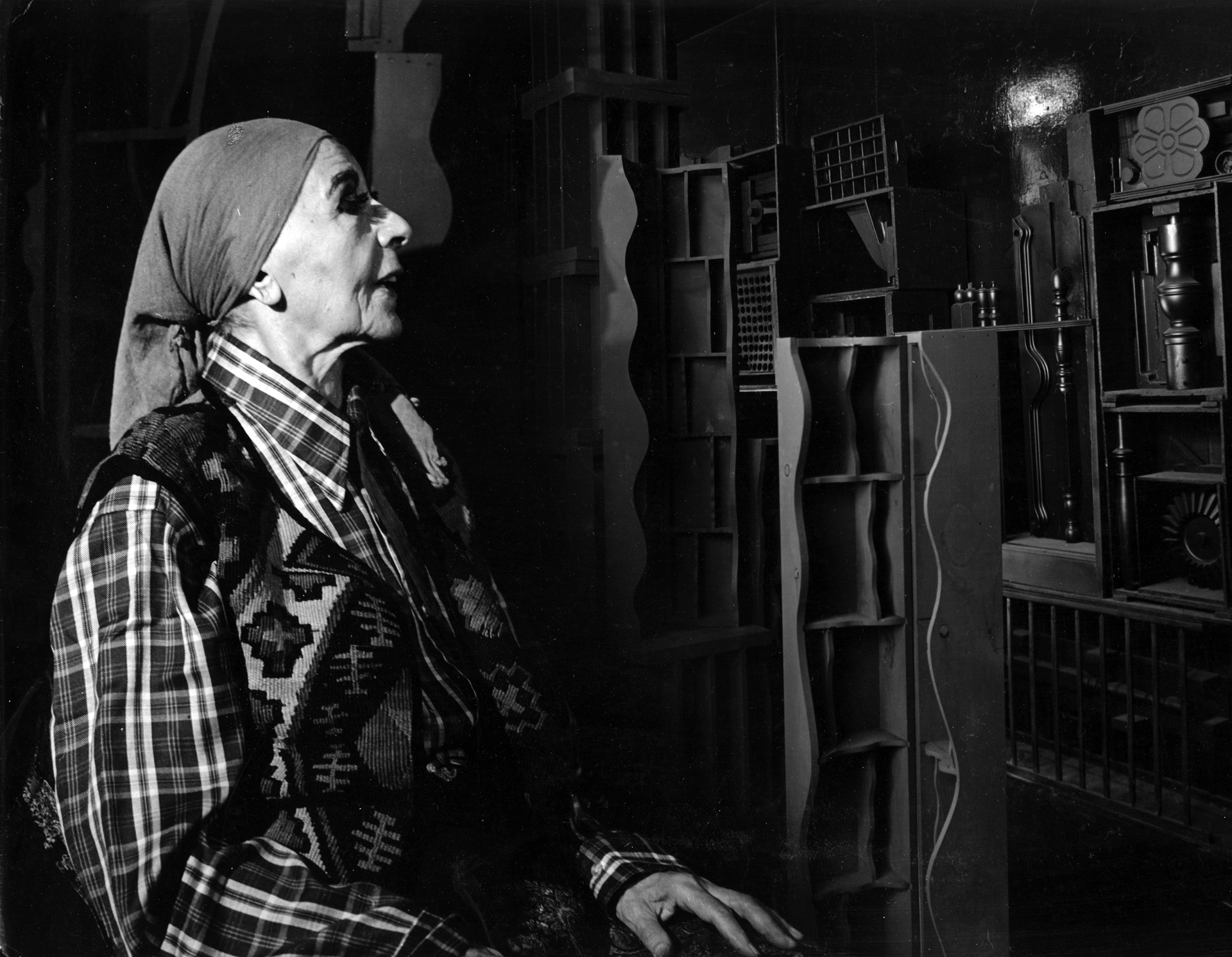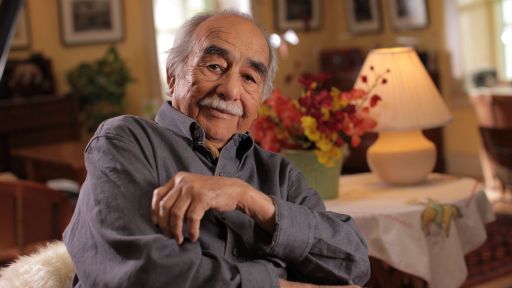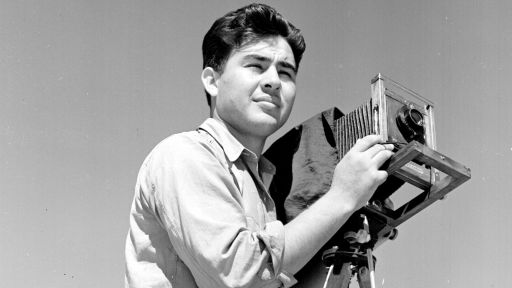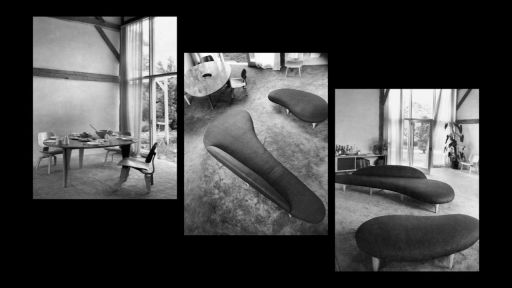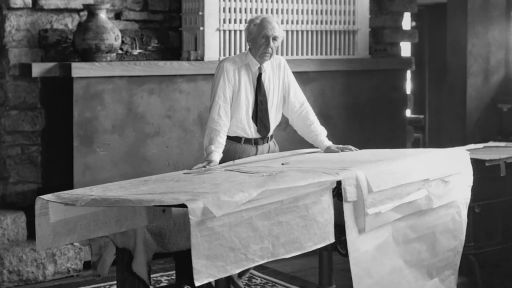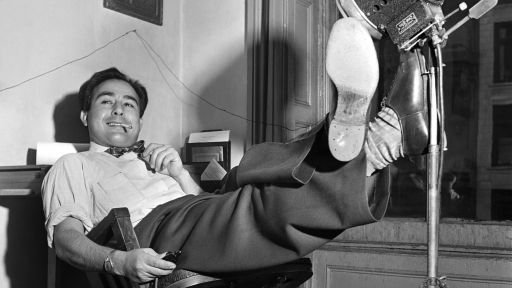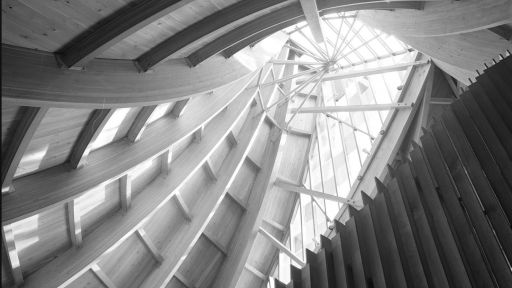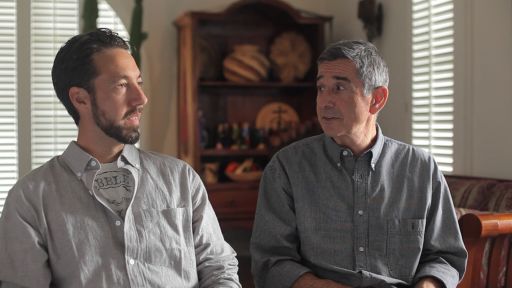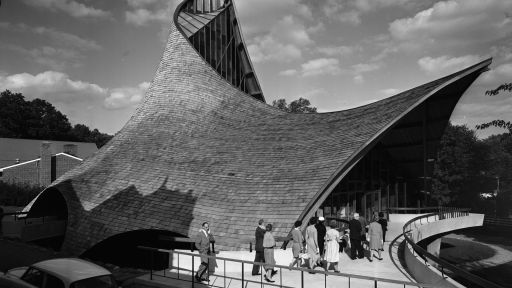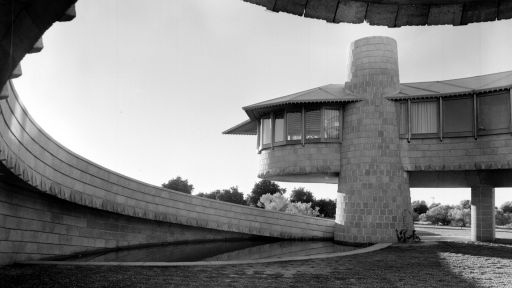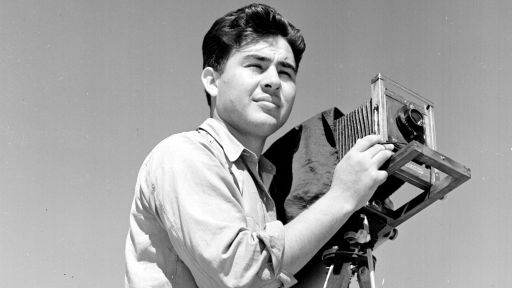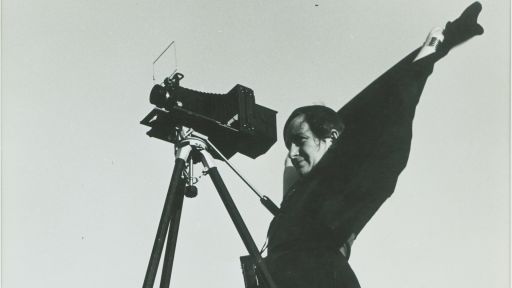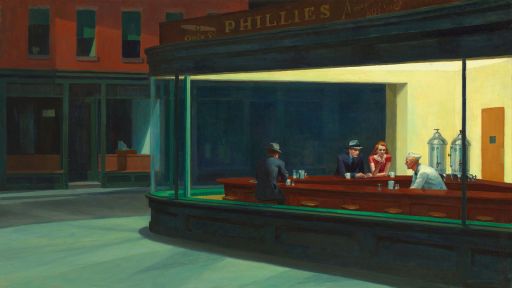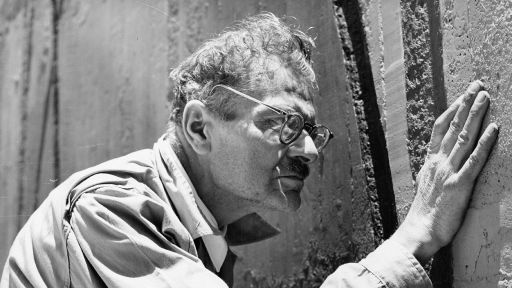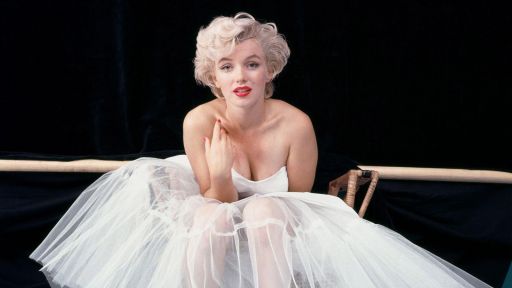Pedro E. Guerrero photographed Louise Nevelson and her sculptures and installations in her apartment, at work studios, on public installation sites and in museums. Her black-on-black works were particularly challenging to capture. In his book Pedro E. Guerrero: A Photographer’s Journey, Guerrero describes working with Nevelson in the chapter titled “The Godmother.”
Pedro E. Guerrero: A Photographer’s Journey – Book Excerpt
By Pedro E. Guerrero. Published in 2007 by Princeton Architectural Press. Used by permission of Pedro E. Guerrero Archives.
ENVELOPED FROM HEAD TO TOE IN FURS and layers of rich, colorful fabrics, the artist Louise Nevelson (1900–1988) looked like a one-woman caravan. I was surprised when I visited her studio for the first time to find that her surroundings were predominantly black and white. She made artwork of found objects—huge walls of abstract shapes—and covered everything in black, white, or gold paint. I spent five years documenting her home and her work. Separating black from black, trying to show dimension and depth in the absence of color, meant that I had to learn photography all over again.
I was sixty-two years old and had been a photographer for forty years when I started photographing Louise and her work. By then I thought that I had met every photographic challenge possible, but I had never encountered the technical difficulties of photographing Louise’s world. It was one thing to leap from the orderly atmosphere of Mr. Wright’s architecture to the chaos of Sandy’s [Alexander Calder’s] studios, but it was quite another to interpret the almost eerie gloom of Louise’s palette. Rooms painted black and furnished with black objects posed the greatest challenge. These spaces consumed light; I had to figure out how to make one black object stand out from the next, to show that it had texture and depth.
Louise and I sometimes chatted during the photo shoots. Louise enjoyed being provocative. “People often come up to me and say things like, ‘You should meet my grandfather. You two would really hit it off,’” she told me. She would reply, “What do I want with an old man like that? I want someone at least twenty years younger.” After the Whitney Museum show, Philip Johnson exclaimed to her, “Louise, where have you been all our lives?” To which she answered, “I’ve been here all the time, darling. You just weren’t looking.”
Our collaboration inevitably came to an end. One of my final photographs of Louise was taken at her house as she, Richard Marshall, an associate curator of the Whitney Museum, and Edward Albee, the playwright, proofread the text for Jean’s 1980 book, to be titled Louise Nevelson: Atmospheres and Environments. Albee, Louise’s longtime friend, wrote the book’s introduction.
I ran into Louise at various art gatherings around town throughout the years. The last time I saw her, she was the featured speaker at a book awards ceremony. Several speakers preceded her and spoke pompously and at great length, and then Louise glided to the podium. She looked around and announced simply, “If there are no other questions, then thank you and good night!” She brought down the house. News of her death came in 1988 when I was on vacation, hiking in the French countryside. I never went back to Doubleday to pursue my three-book deal. All thoughts of that and Jacqueline Kennedy had evaporated as soon as I walked into Louise Nevelson’s world.
See the Pedro E. Guerrero photo gallery for more photos.

